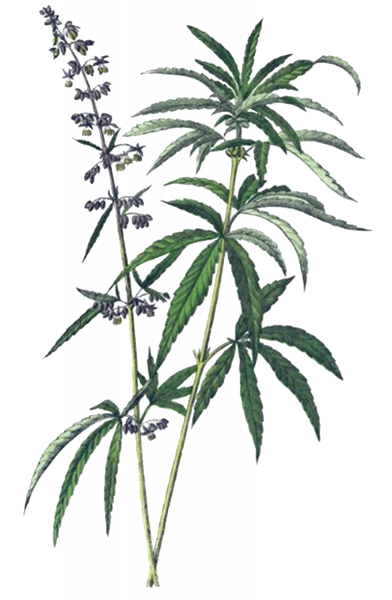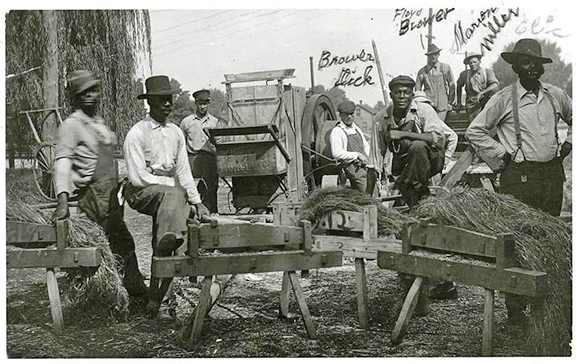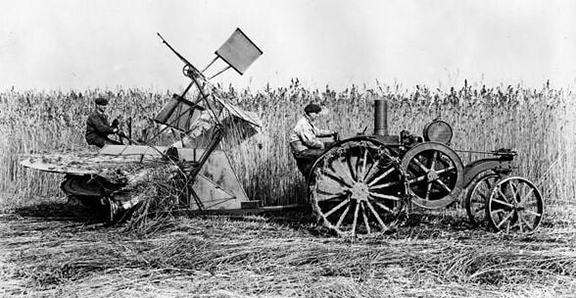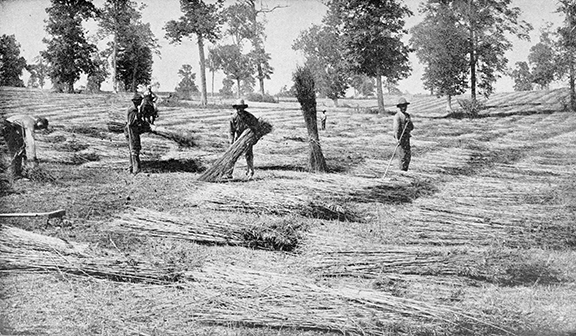Undated Piece from the Pulaski County Public Library
 Quite a while back the library was asked a question that we just couldn’t answer except with rather vague generalities, but since in concerned an important (infamous?) event in Pulaski County history, I thought it would be appropriate to answer it here. Your public library never forgets (well, hardly ever), so, Doris, this answer’s for you. Your question was: “When was marijuana introduced into Pulaski County – and why?”
Quite a while back the library was asked a question that we just couldn’t answer except with rather vague generalities, but since in concerned an important (infamous?) event in Pulaski County history, I thought it would be appropriate to answer it here. Your public library never forgets (well, hardly ever), so, Doris, this answer’s for you. Your question was: “When was marijuana introduced into Pulaski County – and why?”
Well, of course they didn’t call it marijuana, and they didn’t call it recreational, either. It was referred to as hemp and it had a legitimate use in industry for the making of rope and cordage. It was May 1910 when the Universal Fibre company of Chicago found its way south to Pulaski County and laid its corporate eye on our low, muck land.
At that time, muck was pretty uncertain ground for the common crops of the time, although the peppermint industry northwest of Winamac was flourishing, five carloads of roots having been shipped in and planted. But peppermint isn’t corn and that’s what most farmers had been planting.
Hemp was a sure thing. Instead of gambling on the weather the farmer rented his land to the company for about $4.50 an acre. He invested his labor but Universal Fibre provided the seed and fertilizer. In the fall the company would bring in its own machine for “breaking” the hemp – that is separating the fiber and making it ready for use. It could be planted as late as June 15 and fall frosts wouldn’t hurt it. On top of that the rental price would increase a dollar an acre for four years.
How could you go wrong on a deal like that?
Let’s not count the ways.
Thus it was that several hundred acres in Pulaski County were planted with hemp, and we discovered that everything they said about it was true. It’s easy to grow, simple to cultivate, hard to kill, and, most important of all, it’s a terrific money crop.
Raising Of Hemp To Be Tried In This County
Pulaski County Democrat, May 19, 1910
Chicago Company Contracting for Use of Muck Lands for That Purpose

Several hundred acres of hemp are to be raised in Pulaski County this year. The matter has been under consideration for some time, and during the past week several contracts have been signed up.
The Universal Fibre company of Chicago is making the contracts, representatives from the firm having been here at different times. The contracts are not like those made for pickles and the like wherein a man agrees to plant so many acres and sell his crop at the market price. Instead, the land owner simply rents his land to the hemp firm. In most cases the owner is being paid, in addition to the rental, for plowing the ground and planting the seed, which is furnished by the company. At the prices being agreed upon a man gets about $4.50 per acre for the use of the ground this season and for his work of plowing and planting. The rental price, according to the contracts, will increase a dollar a year for four years.
The company will attend to harvesting the crop in the fall, and has a machine for “breaking” it – that is, separating the fibre ready for use.

The only kind of ground being contracted for is low, muck land. Hemp may be planted as late as June 15, and the fall frosts do not hurt it, so the raising of hemp really puts into valuable use ground that is very uncertain for corn. Practically all of the contracts are being made in the north third of the county, because it is there that this sort of land is mostly found.
M.A. Dilts, W. H. Ambler and J. L. Burton are among those who have contracted the largest acreage, and numerous others are turning over smaller fields. A company representative who was here Tuesday sent samples of earth to a Kentucky experiment station to have it tested for learning the correct fertilizer mixture to be used for the best results. The company furnishes the fertilizer, also.
Of course, if the man prefers to put in his own crop rather than rent the ground, it is understood that the company will buy his crop and “break” it on shares when the machine is hereabout in the fall.
Hemp in Pulaski County
Winamac Republican, December 22, 1910
Crop Made A Splendid Showing Despite The Late Planting

The Chicago company which planted 600 acres of hemp in Pulaski County last spring, this week settled up all their bills, although no hemp crop was harvested. The company spent over $6,000 in the Pulaski trial. The crop was put out more for an experiment than anything else, and the demonstration proved beyond question that hemp will grow will in Indiana muck soil, it if is planted in time. The Chicago company was short on cutting machinery, and after mowing a large acreage in the northern part of the state, moved to North Judson, preparatory to cutting the Pulaski County crop. On the day the machinery was moved there was a severe frost and the crop was declared by the expert hemp man to be ruined for fiber purposes.
And What Followed …
- Pulaski County farmers grew hemp to help WWII efforts.
- As a boomer, this writer can attest to the proliferation of “ditch weed” in the countryside.
- Eradication efforts were extensive, and sometimes successful.
- Not involving ditchweed, but the real stuff, Pulaski County was in the spotlight for two major drug cases in the 1980s. (No, we’re not going to go there.)
As noted in the first article above, it’s easy to grow, simple to cultivate, hard to kill, and, most important of all, it’s a terrific money crop.